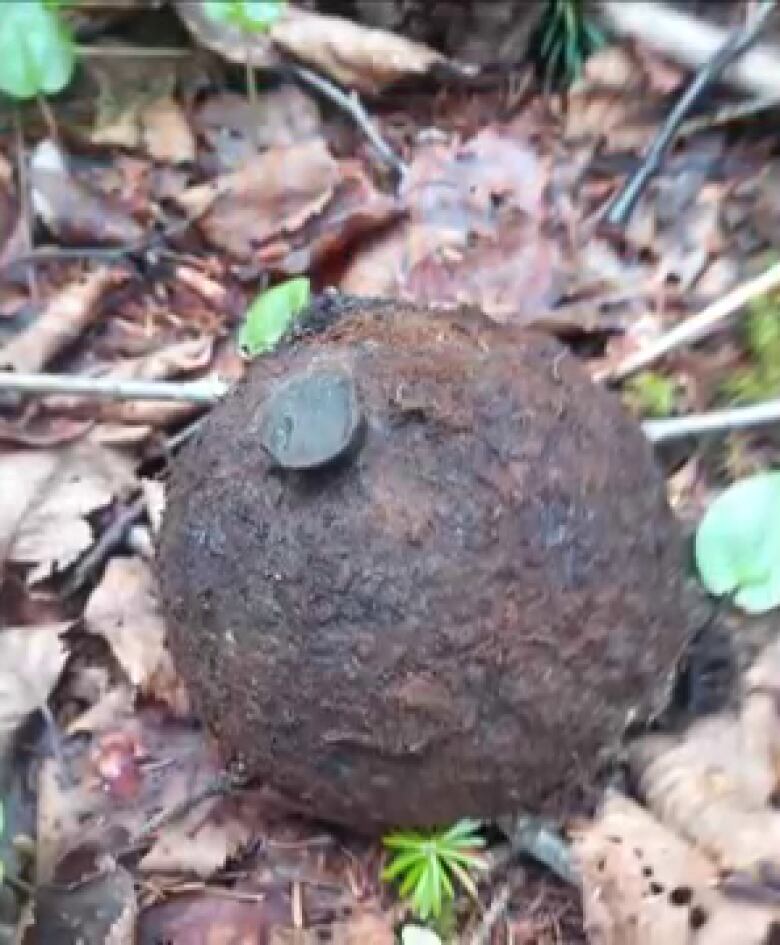Warning to treasure hunters: Stay away from Cannonball Hill!
Metal detector club that found live artillery in St. John's says other finds more common

Hobbyists who found live artillery in the woods behind the Health Sciences Centre in St. John'sare warning others to stay clear of the area they've dubbed "Cannonball Hill".
Kevin-Barry Martin of Newfoundland Metal Detecting says he was there when his colleagues unearthed two cannonballs with brass fuses intact. And it's simply too dangerous.
"Darrell Steele actually had one in his hand,"Martin told CBC Radio's St. John's Morning Show. "He was turning it over and happened to notice the fuse and right away we put it right back where it was to."
The men came across the live ammunition onSunday, May 29. They saidthe Royal Newfoundland Constabulary confirmed the cannonballs were armed after the nine-pound iron balls were destoyed onsite.

Barry saidit's common to find spent ammunition in the area because it was used as a firing range during both world wars. Then last fall they uncovered artillery solid round balls made of iron that appeared to be much older.
"There are no markings to positively identify when or where these were made,"saidMartin. But since the military had switched to shells by the 1820s or 1830s he thinks they could be as much as 200-years-old.
The men also found hand-forged, square-head nails. Martin believes those nails held together wooden targets.
Gold coin and other treasures
Finding live ammunition isn't an everyday thing for Martin. Most objects they recover are more mundane.
"That's the thing about this hobby,"he said."You're going to find a lot of garbage all the time."
But there are rewards. Martin's most valuable find is a Newfoundland gold coin from 1888.
"Worth close to a thousand dollars," he said.

Other treasures include jewellery, old Spanish coins and an Australian belt buckle from the turn of the last century. His favourite is a sterling-silver baby spoon showing Little Miss Muffett of nursery rhyme fame.
But nothing so dangerous or exotic as a live cannonball.
"Just pure dumb luck,"he said."Like most things you just stumble across it and don't realize what you have."
'Like buying a lottery ticket'
Martin saidhe took up the hobby when he moved to the city and found it more difficult to go fishing. He stumbled across treasure hunting; Like angling, it got him out of bed early and gave him an excuse to enjoy nature.
"It's kind of like the same thing," he said. "You're just waiting for a bite. Which would happen to be, hopefully, a gold ring instead of a pull tab."
Members of Newfoundland Metal Detecting usually do their searches in small groups of two or three people. They'll pick an area that has a history of human activity.
"It's kind of like buying a lottery ticket. Just walk and walk and walk," he said. "and you just keep having faith you're going to come across something good."
Kevin-Barry Martin's ultimate discovery?
"This may sound funny but I've always wanted to find a silver thimble," he said. "My buddies have, but I've never found one yet."
with files from St. John's Morning Show












_(720p).jpg)


 OFFICIAL HD MUSIC VIDEO.jpg)
.jpg)



























































































